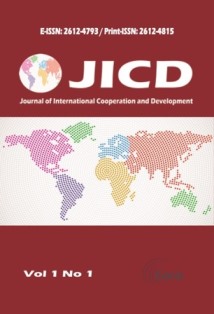The Integration of Information and Communication Technologies (ICTs) in the Teaching of Mathematics in Secondary Schools: an Ecosystemic Approach
DOI:
https://doi.org/10.36941/jicd-2018-0003Keywords:
Information and Communication Technologies (ICTs), Maths Teaching, Secondary Education, Ecosystemic Approach, Latent Variable Models, LISRELAbstract
The rate at which the ICTs (Information and Communication Technologies) are introduced into the educational process is very slow in spite of the materialized high ICTs investment in the sector. The purpose of this thesis is to investigate the factors, which lead to the observed low rate of ICTs adoption in the process of Maths teaching in the secondary education in Greece. The use of ICTs by the Maths teachers is distinguished in two categories: use for the teachers’ own personal needs and use in class.By using an ecosystemic approach, the ICTs are specified as invaders into the school environment – the ecosystem – disturbing the existing balance among its elements – computer applications and teachers. The empirical exercise included the 237 secondary education schools in the Prefecture of Thessaloniki together with the 742 Maths teachers of these schools. Semi-structured interviews and a questionnaire survey were carried out in 2006-07. The collected data were analyzed by using the Latent Variable Models. The LISREL software was used.The results show a strong two-way relationship between Maths-teachers’ use of ICTs for their own needs and their use in class. “Fear” of ICTs use in class, as well as teacher-collaboration, and favorable-to-ICTs school environment are among the factors which affect significantly the ICTs adoption in class.Downloads
Downloads
Published
2018-11-05
Issue
Section
Articles
License
This work is licensed under a Creative Commons Attribution-NonCommercial 4.0 International License.
How to Cite
The Integration of Information and Communication Technologies (ICTs) in the Teaching of Mathematics in Secondary Schools: an Ecosystemic Approach . (2018). Journal of International Cooperation and Development, 1(1), 26. https://doi.org/10.36941/jicd-2018-0003








